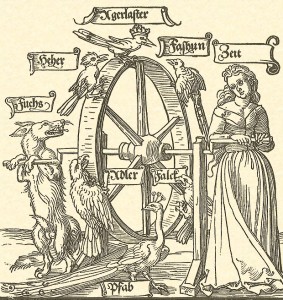Marketing budgets are always on the squeeze. Or may be less that money is tight and more that the expectations on Return on Marketing Investment (ROMI) are raised. “I don’t mind spend £50k on this campaign, but I want to know what return I got, or you won’t have £50k to splurge next year”.
The point is – how do we get more return for less investment? Well there is a way, and it’s free – and it’s where the company I work for get around half of our traffic. And they’re good leads, probably the best we get.
What’s the magic formula? What’s the source of these Glengarry leads? It is, of course, being recommended by a friend. We regularly ask our customers “Where did you hear about this product you just bought?” And the two biggest answers are “Recommended by a colleague” and the related answer “Used it in my previous job”. The latter I think of as “Recommended to myself” – if you move job it’s a great opportunity to dump old products you didn’t like using, so to take on the same products again in a new role is a real testament to your product offering.
These two answers add up to more than 50% of responses, with things like “Google”, “Events” and “Ads” (the things we have to pay for) a long way behind.
Now obviously there are significant subtleties here – getting to a point where people recommend your products to colleagues takes years of significant investment in R&D, support, innovation, community work and so on. Also of course, paid-for marketing is generally targeted at getting new people in from new organisations. But once you get this fly-wheel of traffic spinning, you can take your ROMI as high as you like – I suspect we could completely cut our marketing spend for certain products and not see a downward trend in leads for a year or two – some products have effectively reached escape velocity. One of the reasons this source is so effective is that not only do you get a great lead when Frank recommends your product to Joey, but then Joey recommends you to Dave and Kim and the effect, if not viral, is at least self-perpetuating.
But enough of this self-congratulation – what has this got to do with Net Promoter scores? Wikipedia describes Net Promoter scores (NPS) as a measure of customer satisfaction. In essence you ask your customers “How likely are you to recommend our company/product/service to your friends and colleagues? ” on a scale of 0 to 10 (0 is bad, 10 is good). Then add up the number of 9s and 10s (“promoters”) and subtract the number of 0-6s (“detractors”). This expressed as a percentage gives you your net promoter score. Anything above zero is good, anything over 50 is excellent.
So it could be argued – increases in NPS should indicate an increase in customers’ willingness to recommend you to colleagues and friends (assuming they have the channels to do so – a separate question) leading to lower marketing spend required. But how do you impact NPS?
I think this is actually an easy, obvious, yet hard-to-implement question. A dollar invested in marketing a poor product with poor support from a badly run company is a dollar thrown away – because you’ll never fulfill the promise made by your advertising. But a dollar invested in making your product, support, sales support, community groups etc great is a dollar invested in future free marketing and revenue.
But it’s hard to implement this because budgets for marketing and R&D are often quite separate. How do you divert the former to the latter? Not easily. Also note of course you still need to be spending on marketing – as I’ve said before you can have the finest product in the world, but if no-one knows about it you’re wasting your time. But invest that dollar in marketing your world-class product after you’ve made it world-class.
I haven’t said anything about how to increase your NPS but that’s because it will be different for every organisation. In most NPS surveys the recommendation is to follow up the initial rating question with “What didn’t you like about company X?”. Do the things people ask for! If they all love your product but hate your support, then that’s where to invest and so on.
The investment in quality you’re making here is an investment in reduced marketing spend in the future.
As a footnote, we run a big NPS survey once every 6 months with lots of “What do you like about us?”, “What don’t you like?” questions. It’s running as I write this and it’s all I can do not to peek at the answers that are in so far!
